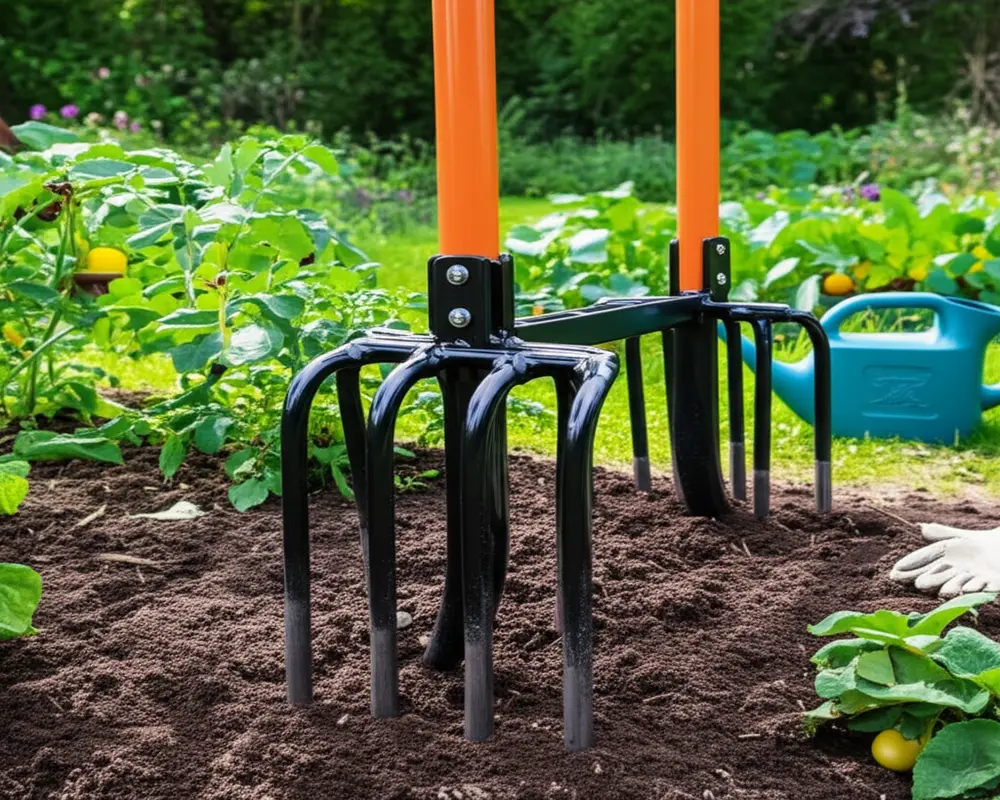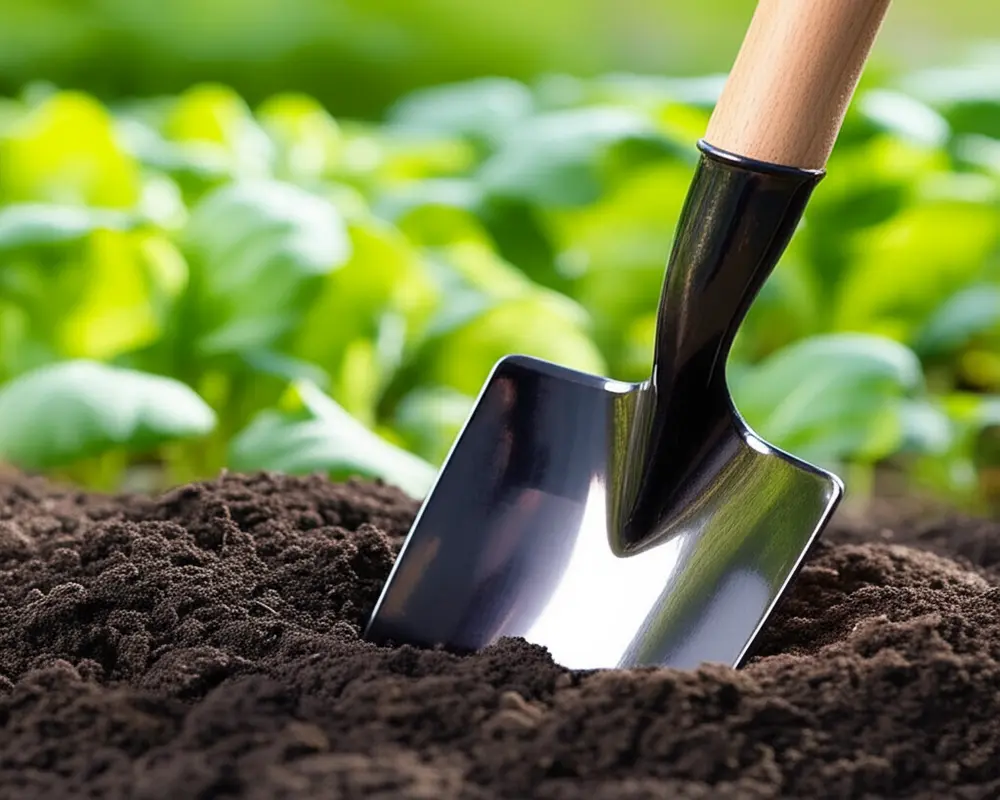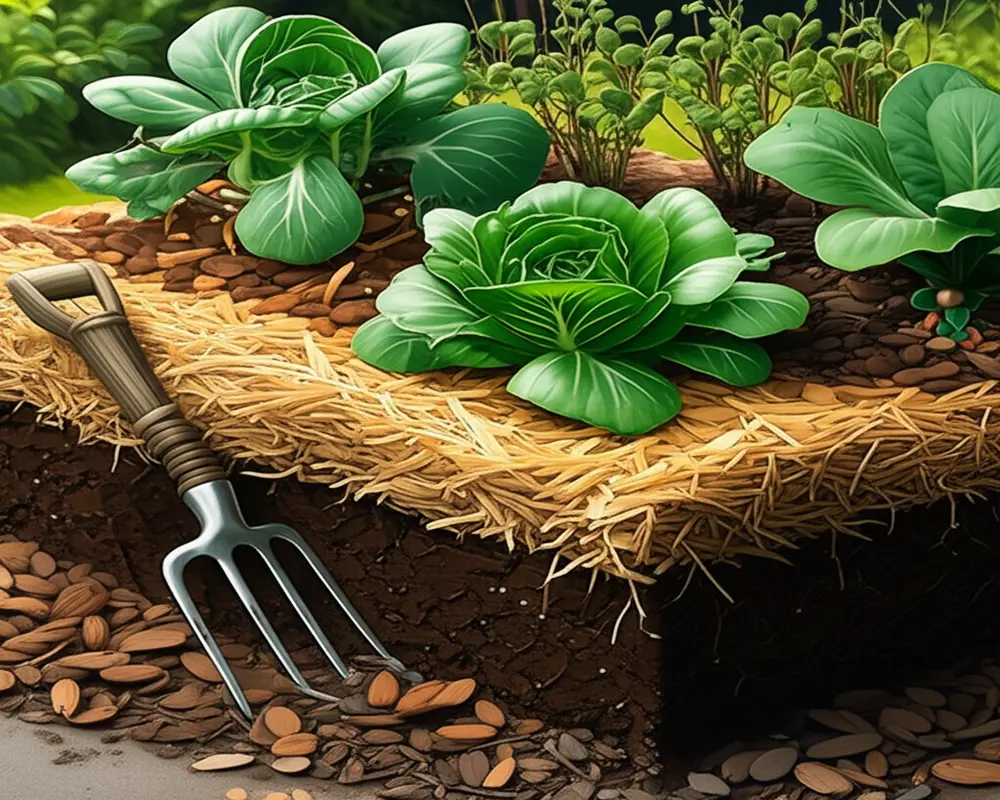Garden Fork Alternatives: Best Tools & Methods for Every Gardener in 2025
Gardeners often rely on the trusty garden fork to perform essential tasks such as loosening, aerating, turning soil, and lifting plants. These functions are critical to maintaining healthy soil and thriving plants. However, in 2025, many gardeners seek garden fork alternatives driven by various reasons—lack of availability, challenging soil conditions like dense clay or rocky terrain, physical comfort and ergonomic preferences, sustainability practices like no-dig gardening, and budget or storage considerations.
Thank you for reading this post, don't forget to subscribe!This comprehensive guide explores both tool-based and methodological alternatives to the traditional garden fork. Backed by expertise and practical insights, it aims to equip every gardener—from the novice to the seasoned green thumb—with ideal options tailored to different soils, garden sizes, and philosophies.
Direct Tool Replacements: Expanding Your Garden Toolkit
Alternative tools can replicate many tasks of a garden fork effectively. Each alternative has its own merits, suited for specific gardening scenarios.
A. The Versatile Broadfork: No-Till Champion
The broadfork consists of a wide frame with multiple tines designed for loosening soil without disturbing its structure through tillage. It is held by two long handles and pressed into the ground by stepping on cross bars, then gently pulled back to aerate the soil. Compared to a garden fork, the broadfork covers a wider area with less effort and avoids soil layer disruption which benefits microbial life.
Ideal for organic gardens and no-dig gardening, it excels where preserving soil health is prioritized. However, its larger size might limit use in very tight or rocky areas.

B. The Workhorse Spade: Digging, Edging, Turning
Spades are classic garden essentials featuring either a square or rounded point. Unlike a garden fork, which penetrates and lifts soil, spades effectively cut through soil and roots. Square-point spades are best for edging and cutting turf, while rounded-point spades facilitate digging and turning compacted soil.
While spades do not aerate soil like forks, their versatility makes them indispensable. They are particularly useful in dense clay soils or when creating planting holes. Spades serve as solid alternatives when garden forks are unavailable.
Learn more about different garden spades including best garden spades and stainless steel garden spades to fit different garden needs.
C. The All-Purpose Shovel: Moving & Scooping
Shovels excel at moving soil, compost, or mulch, offering scooping action rather than penetrating soil mechanically. Although they are not specific aerators like garden forks, shovels assist in soil turning and preparation, especially in large beds or when redistributing soil.

Spades and shovels often complement each other in tasks requiring soil manipulation. For detailed guidance on shovels and spades, refer to internal resources such as folding garden spades.
D. The Powerful Mattock: Tough Terrain & Roots
Mattocks combine an axe blade and adze on opposite sides of a long handle, designed for cracking compacted or rocky soil, and cutting through roots. The pick mattock features a pointed blade for penetrating hard ground, while cutter mattocks concentrate on root removal.
Compared to garden forks, mattocks demand more strength but effectively handle challenging terrains. They are recommended for transforming stubborn garden plots where other tools struggle.
E. The Mighty Pickaxe: Compacted/Rocky Ground
A pickaxe offers a sharp, pointed end for fracturing hard-packed soils and breaking rocks underground. It is less suited for delicate aeration tasks but is invaluable when opening new garden areas with tough soil.
F. Cultivators (Hand & Long-Handled): Surface Loosening & Weeding
Cultivators feature claw-like tines designed to break up the topsoil surface and aid in weed control. They are lightweight alternatives for light aeration near plant roots and in flower beds where minimal soil disturbance is desired.
G. Hoes (Warren, Draw, Scuffle, Dutch): Weeding & Shallow Cultivation
Hoes perform complementary tasks by cutting weeds and loosening the soil crust superficially. Various styles like draw hoes or scuffle hoes differ in technique but all support surface soil management without deep disruption.
H. Rotary Tillers (Electric & Gas): Large-Scale Soil Prep
Rotary tillers mechanically turn large swaths of soil for planting preparation. They replicate some functions of garden forks on a large scale but may adversely affect soil structure and biology with repeated tillage. Use tillers cautiously to avoid degrading soil health.
I. Hand Trowels & Small Forks: Precision & Container Gardening
For container gardening and precise tasks, hand trowels and small forks provide controlled soil manipulation, akin to miniature garden forks. They allow targeted aeration and soil loosening in tight spots, ideal for urban or balcony gardens.
J. Digging Bar / Wrecking Bar: Leverage & Obstacle Removal
Digging bars offer leverage for breaking rocks, hardpan, and removing stubborn debris from soil. They aren’t soil aerators but facilitate site preparation where garden forks won’t penetrate.
K. Post-Hole Diggers: Deep Narrow Holes
Post-hole diggers excel at opening deep, narrow holes for planting trees or installing fences. Unlike garden forks, which work soil laterally, these specialize in vertical excavation.
Methodological Alternatives: Cultivating Without Digging
Beyond tools, alternative gardening methods bypass garden forks by minimizing or eliminating soil disturbance entirely. These approaches favor soil biology and sustainability.
A. No-Dig Gardening: Top-Down Soil Fertility
The core philosophy of no-dig gardening is to avoid soil disruption to preserve its natural structure and microbial life. Instead, gardeners build fertile top layers by applying organic matter and mulch progressively.
This technique offers numerous benefits: improved soil texture, moisture conservation, reduced weed pressure, increased biodiversity, and less labor. Common no-dig practices include sheet mulching (also called lasagna gardening), deep mulching, and raised beds where layers of organic materials enrich the soil without turning it.

No-dig gardening suits gardeners focused on sustainability, low physical strain, and improved soil life. For detailed principles and implementation, resources like the Permaculture Research Institute provide excellent guidance.
B. Container & Vertical Gardening: Bypassing Ground Soil
When soil conditions are poor or space is limited, container and vertical gardening entirely evade ground soil use. This method uses pots, grow bags, or vertical structures filled with potting mix optimized for plant growth.
Ideal for urban gardeners and those seeking to control soil quality precisely, container and vertical gardening provide ergonomic benefits and avoid soil compaction or weed issues altogether.
C. Permaculture & Keyline Design
Permaculture and keyline design philosophies encourage reducing intensive soil tillage by strategically planning water flow and garden layouts. For instance, swales—shallow ditches designed along contour lines—help retain water and facilitate soil fertility naturally, negating the need for fork-based soil turning. These integrated landscape strategies emphasize harmony with natural systems.
Choosing Your Best Garden Fork Alternatives: A Decision Guide
Selecting the optimal garden fork replacement depends on multiple factors:
- Assess soil type: Determine if your soil is loose, sandy, compacted clay, rocky, or already established with perennials. Tools like broadforks suit undisturbed but compacted soil, while mattocks or pickaxes handle rocky terrain better.
- Define the task: Identify if your goal is soil breaking, aeration, weeding, planting, or amending. Some tools suit specific jobs—cultivators for weeding, shovels for moving soil, and hand trowels for container tasks.
- Physical ability & ergonomics: Consider the tool’s weight, handle design, and grip comfort. Ergonomic spades and broadforks reduce strain, ideal for gardeners with physical challenges.
- Budget & storage: Balance tool cost with frequency of use and storage capacity. Larger tools like broadforks might require outdoor storage space.
- Gardening philosophy: Align your choice with your gardening approach—traditional tillage or sustainable/no-dig methods—and the specific ecological goals you have.
For a comparative overview, see this summary table:
| Tool | Use Cases | Soil Suitability | Effort Required | Cost Range |
|---|---|---|---|---|
| Broadfork | Soil aeration, no-till loosening | Compacted, undisturbed | Moderate | $$$ |
| Spade | Digging, edging, turning | Clay, loose | Moderate | $-$$ |
| Shovel | Soil moving, scooping | Various | Moderate | $-$$ |
| Mattock/Pickaxe | Breaking roots, hard soil | Rocky, compacted | High | $$ |
| Cultivator/Hoe | Surface loosening, weeding | Looser soil | Low to moderate | $ |
| Rotary Tiller | Large-scale soil prep | Various, but careful | Low (machine) | $$$+ |
| No-Dig Gardening | Soil health, organic gardening | Established or new beds | Low | Varies |
Frequently Asked Questions (FAQs)
1. When should I choose a shovel over a garden fork?
Use a shovel primarily for moving or scooping soil and materials. If your task involves cutting sod or digging precise edges, spades or garden forks may be better.
2. What is the best tool for compacted clay soil?
The broadfork is highly effective for loosening compacted clay without disturbing soil layers, maintaining structure and aeration.
3. Can a broadfork effectively replace a garden fork?
Yes, for aeration and loosening tasks, a broadfork can cover more ground with less disturbance, making it a superior alternative where soil health is a priority.
4. How do I start no-dig gardening in hard soil?
Begin by layering organic matter on top of the soil, such as compost, mulch, and cardboard. Over time, this enriches and softens the soil naturally without tilling.
5. What is the difference between a garden fork and a digging fork?
They are generally synonymous; both refer to forks used for soil loosening and turning. The term “digging fork” is often used interchangeably with “garden fork.”
Conclusion: Empowering Your Gardening Journey
Today’s gardeners enjoy a diverse toolkit and a variety of methods beyond the classic garden fork. Whether opting for robust tools like broadforks and mattocks, versatile spades and shovels, or embracing innovative no-dig techniques and container gardening, the choice rests on individual needs, soil types, and gardening philosophies.
The best approach is personalized—experiment with options, observe how your soil and plants respond, and adapt accordingly. Sharing experiences with fellow gardeners fosters a supportive community of knowledge exchange.
Explore further tools and products to complement your garden efforts by visiting internal resources like best garden spades and ergonomic garden spades. For authoritative gardening practices, the Royal Horticultural Society remains a trusted source.
Empower your green space with the right tools and methods in 2025 and beyond.

